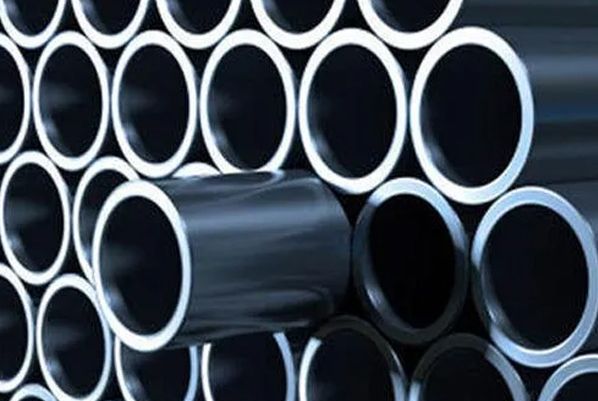Din2391c Hydraulic Piping
-
 2022-10-08
2022-10-08
-


The hydraulic system is a critical component of excavators as they perform functions such as lifting and lowering. The hydraulics also helps in digging, loading, and unloading of material, and other functions that an excavator needs to operate efficiently.
All these operations are performed by the hydraulic system in an excavator. To understand the components of the hydraulic system better, let’s take a closer look at its different elements:
Meaning of Hydraulic System and Its Components
Hydraulic system – This is a system in which fluid (commonly water) is used to transfer power or energy. Hydraulic systems are used in a wide range of applications such as construction, mining, and manufacturing. Hydraulic components – Hydraulic components are the elements that make up the hydraulic system. They include the hydraulic pump, hydraulic motor, servo and controller, line pressure regulator, hose reel, and hydraulic oils.
Hydraulic Piping Pump
The hydraulic pump is a key part of the hydraulic system. It is used to suck out the oil from the reservoir and pressurize it. This pressurized oil is then distributed to all parts of the system. The hydraulic pump consists of rotors that spin inside a casing. These rotors are connected to a crankshaft that rotates.
As the crankshaft rotates, it is connected to a piston inside the hydraulic pump. The hydraulic pump is lubricated by hydraulic fluid that is supplied from the reservoir. The hydraulic pump operates on the positive displacement principle.
This means that it draws the fluid from the reservoir and forces it into a smaller chamber. This is done in a cyclic fashion to produce a constant flow of fluid. When the pump is operating, it consumes energy in the form of electricity. Hydraulic pumps are also prone to overheating. To prevent this, the system has an automatic shutdown feature.
Hydraulic Motor
The hydraulic motor is a rotary device that is used to move the control valves in an excavator. It is, therefore, an important part of the hydraulic system. The hydraulic motor is connected to the control valves through hydraulic cylinders.
The hydraulic motor is often used to pressurize the oil. In other words, it is used to pump the oil from the reservoir and then distribute it to the various parts of the hydraulic system. The hydraulic motor is a rotary device with an eccentric shaft. This eccentric shaft is connected to a number of hydraulic pistons.
As the hydraulic motor rotates, it causes the hydraulic pistons to move. This, in turn, moves the control valves. If the hydraulic motor becomes clogged with dirt, it could get overheated. In order to prevent this from happening, it is important to clean the motor regularly. A dirty motor might also reduce the life of the hydraulic system.
Servo and Controller
The servo and controller are used to control the pump and the motor. They are responsible for managing the flow of the oil as well as the pressure. The flow and pressure are controlled in order to perform the desired function.
The pump and motor are connected to the controller via hoses. The controller communicates with the pump and motor using electrical signals. The controller also has a flow sensor that measures the flow of oil. This is important when controlling the pressure.
The controller regulates the pressure using a pressure sensor. The pressure sensor is connected to a spring-loaded pressure regulator. When the pressure is too high, the regulator opens to release some oil. When the pressure is too low, the regulator closes.
Line Pressure Regulator
The line pressure regulator is used to control the pressure in the hydraulic system. It is connected to the control valve and the reservoir. The purpose of the line pressure regulator is to balance the pressure in the hydraulic system.
The pressure sensor is used to monitor the pressure in the hydraulic system. When the pressure is too high, the pressure regulator opens. This releases some oil and reduces the pressure. When the pressure is too low, the regulator closes.
This increases the pressure in the system. The line pressure regulator is controlled by a spring. When the spring is loose, it allows the oil to flow through it. This reduces the pressure in the system. When the spring is tight, it closes the regulator and increases the pressure in the system.
Hose Reel / Manifold
The hose reel is connected to each hydraulic line. It is used to feed and store the hydraulic lines. The manifold is connected to the end of the hose reel. It is also used to feed and store the hydraulic lines.
Manifolds and hose reels are important for safety. This is because hydraulic hoses are flexible and can be used in tight spaces. When the excavator is not being used, the lines should be coiled up and stored in the reel. When an excavator is in operation, it’s important to keep the hydraulic lines clean and clear. This can be achieved by flushing the lines with fresh hydraulic oil.
Final Words
Hydraulic systems are used in a wide range of applications. In excavators, they are used to perform functions such as digging and loading.
Hydraulic systems also help in digging, loading, and unloading of material, and other functions that an excavator needs to operate efficiently. An excavator is more productive when it has a fully functional hydraulic system.



